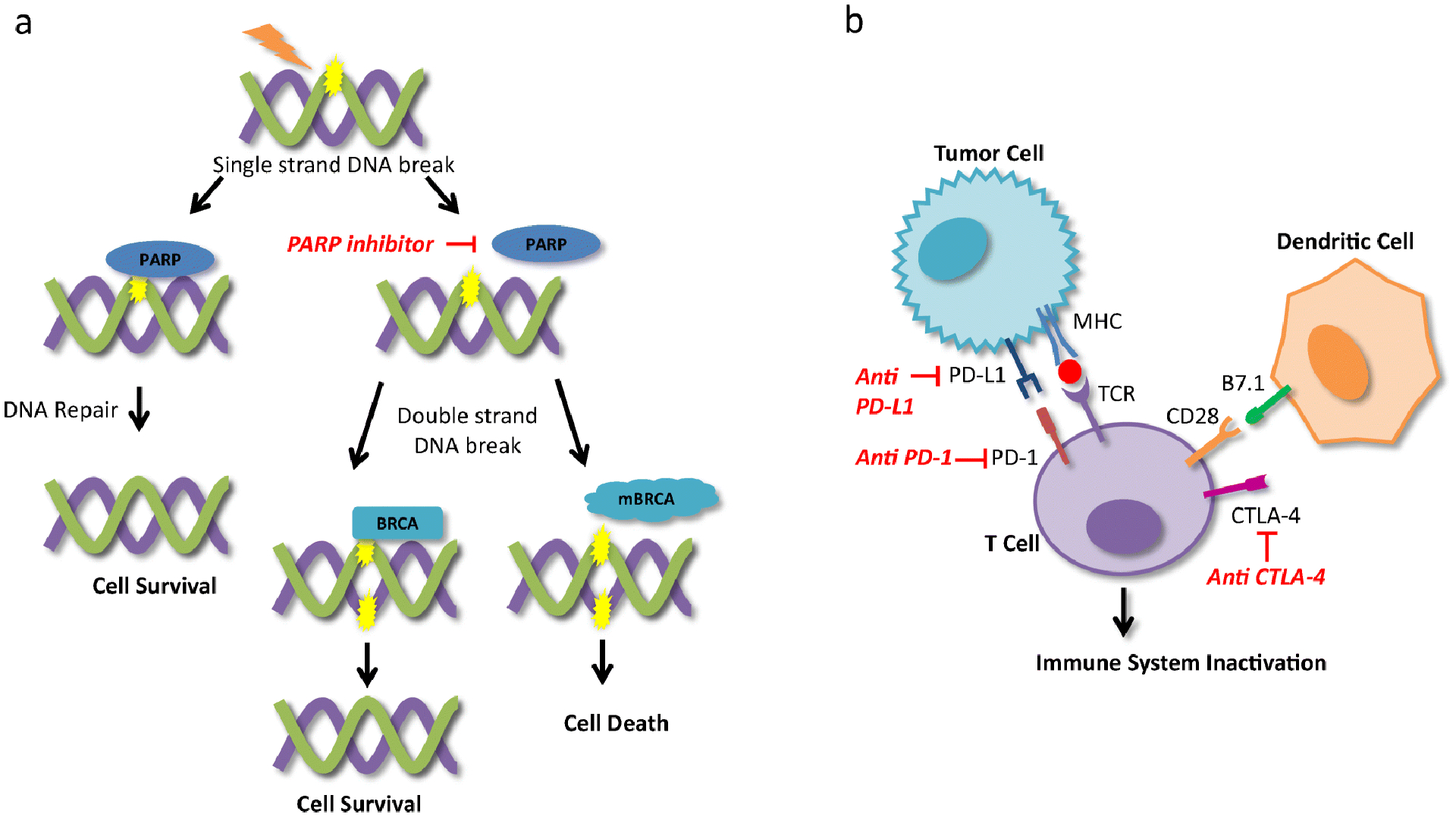Figure 1.

Mechanism of action of PARP inhibitors and immune checkpoint inhibitors. (A) The PARP enzymes repair single-stranded DNA breaks which allow for cell survival. PARP inhibitors prevent PARP from repairing single-stranded DNA breaks which result in double-stranded DNA breaks. BRCA proteins repair double-stranded DNA breaks via homologous recombination and allow for cell survival however mutated BRCA proteins lose the ability repair double-stranded DNA breaks resulting in cell death. (B) Interaction between PD-L1 on tumor cells and PD-1 on T cells results in immune system inactivation and tumor cell survival. CTLA-4 on T cells competes with CD28 for B7 ligands on antigen presenting cells and when bound to B7 results in immune system inactivation. PD-L1, PD-1 and CTLA-4 blockade results in immune system activation and anti-tumor response. PARP: Poly ADP-ribose polymerase, BRCA: breast cancer gene, mBRCA: mutated BRCA gene, PD-L1: programmed-death ligand 1, PD-1: programmed cell death protein 1, CTLA-4: cytotoxic T-lymphocyte-associated antigen 4; MHC: major histocompatibility complex, TCR: T cell receptor.
